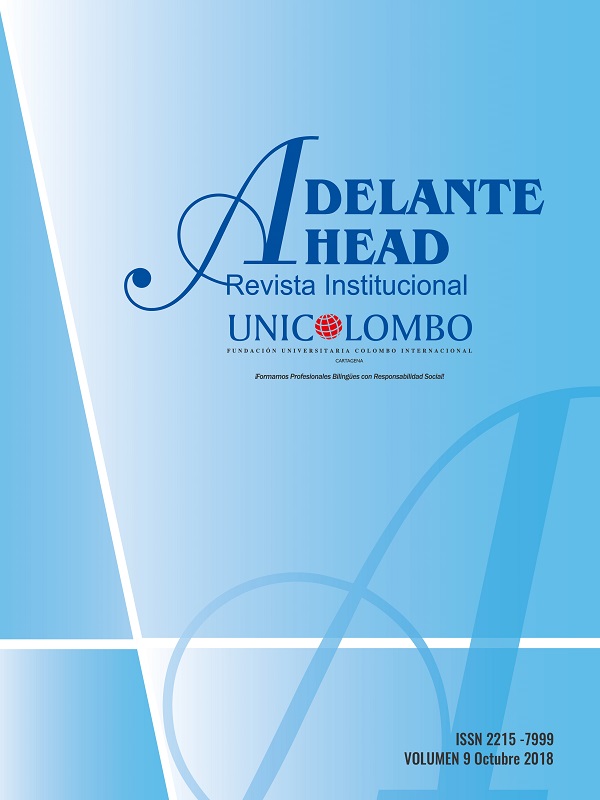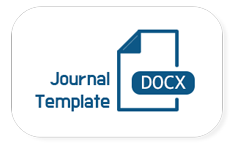TEACHER DEVELOPMENT IN CONTENT-BASED LANGUAGE TEACHING
Resumen
Abstract. Teacher development is the process to qualify teachers' abilities, competences, and knowledge in order to develop a pedagogical process into a specific approach. In other words, it helps teachers to be more proficient in language, didactic, pedagogy or in a specific subject area, based on the principles of an approach, in this case, Content-Based Language Teaching (henceforth CBLT). This review paper focuses on the process of teacher development into CBLT; it first presents a set of main categories or statements that offer a guide for a successful CBLT teacher development, reviewing important authors who present theories based on different research works that finally give specific annotations to take into account in this process. Then, it describes a list of teacher competences to implement CBLT, followed by a categorization of different strategies and process development to train teachers in regards to its implementation. Finally, there is a description of different teachers' perceptions about their experience as CBLT teachers.
Keywords: Content based language teaching (CBLT), language skills, language teaching training
Resumen: La capacitación docente es el proceso mediante el cual, los maestros cualifican habilidades, competencias y conocimientos con el fin de desarrollar un proceso pedagógico en un enfoque determinado. En otras palabras, ayuda a los maestros a alcanzar más dominio de un idioma, de la didáctica, de la pedagogía o en un área específica, basado en los principios de un enfoque, en este caso, el enfoque en enseñanza de la lengua basado en contenidos (CBLT). Este artículo de revisión se centra en el proceso de desarrollo de los maestros en CBLT. En primer lugar, se presenta un conjunto de categorías que ofrecen una guía para una capacitación exitosa dentro del CBLT, basándonos en teorías propuestas por autores importantes que llevaron a cabo diferentes investigaciones. Finalmente, se expone una descripción de las diferentes experiencias de los docentes dentro de CBLT.
Palabras claves: Enseñanza de lenguas basada en contenidos, competencias de la lengua, capacitación en la enseñanza de las lenguas
Descargas
Citas
Referencias
Albakri, I., Ismail, N., Omar, A., Harun, R., & Abidin, N. (2012). Experienced Teachers Pedagogical Strategies In Content-Based Instruction Contexts. INTED 2012: International Technology, Education and Development Conference, (págs. 6001-6005). Valencia.
Banegas, D. (2012). CLIL teacher development: Challenges and experiences. Latin American Journal of Content & Language Integrated Learning, 5(1), 46-56.
(2015). Sharing views of CLIL lesson planning in language teacher education. Latin American Journal of Content and Language Integrated Learning, 8(2), 104-130.
Banegas, D. (2016). Teachers develop CLIL materials in Argentina: A workshop experience. LACLIL, 9(1), 17-36.
Bertaux, P., Coonan, C., Frigols, M., & Mehisto, P. (2010). CLIL Competence Grid. Obtenido de CLIL Cascade Network.
Bj ö rk l un d , M. ( 2 0 1 3 ) . Mul t i l i n g ua l i sm a n d multiculturalism in the Swedishmedium primary school classroom in Finland – some teacher views. International Electronic Journal of Elementary Education, 6(1), 117–136.
Cano, R. (2015). Master's Thesis. Evaluating the Implementation of Content Classes Delivered in English in Light of a CLIL-Based Curriculum. Universidad Pontificia Bolivariana.
Casteel, C., & Ballantyne, K. (2010). Professional development in action: Improving teaching for English learners. Washington: National Clearinghouse for English Language Acquisition.
Costa, F., & D'Angelo, L. (2011). CLIL: A suit for all seasons? Latin American Journal of Content & Language Integrated Learning, 4(1), 1-13.
Coyle, D., Hood, P., & Marsh, D. (2010). CLIL: Content and language integrated learning . Cambridge: Cambridge University Press. Curtis, A. (2012). Colombian teachers' questions about CLIL: What can teachers' questions tell us? Latin American Journal of Content and Language Integrated Learning, 5(2), 1-12.
Echevarría, J., Short, D., & Vogt, M. (2008). Implementing the SIOP Model through effective professional Development and coaching. New York: Pearson Education, Inc.
Eyjólfsdóttir, T. (s.f.). Content-based instruction A closer look at CBI in Iceland. BA Thesis . Stakkahlíð, Reykjavík, Islandia: Menntavísindasvið Háskóla Íslands.
Gomez-Zwiep, S., & Straits, W. (2010). Elementary teachers' perspectives on the integration of English as a Second Language and Science Instruction. AccELLerate, 2(3), 5-7.
Hansen, T., & Casey, P. (2010). Accelerating ELL Learning. AccELLerate! The quarterly newsletter of the National Clearinghouse for English Language Acquisition, 2(4), 2-20.
Hillyard, S. (2011). First steps in CLIL: Training the teachers. Latin American Journal of Content & Language Integrated Learning, 4(2), 1-12.
Horn, B. (2011). The future is now: Preparing a new generation of CBI teachers. English Teaching Forum, 49(3), 2-9.
Hunt, M. (2011). UK teachers' and learners' experiences of CLIL resulting from the EU-funded project ECLILT. Latin American Journal of Content &
Language Integrated Learning, 4(1), 27-39.
Marsh, D., Mehisto, P., Wolff, D., & Frigols-Martín, M. (2011). European Framework for CLIL Teacher Education. Austria: European Centre for modern Languages.
McDougald, J. (2014). Editorial introduction. Latin American Journal of Content and Language Integrated Learning, 7(2), 3-5.
McDougald, J. (2016). CLIL approaches in education: Opportunities, challenges, or threats? Laclil, 9(2), 253-266.
Mcdougald, J., & Anderson, C. (2015). CLIL and Education Coming Together: The Crossroads for Multilingualism. LACLIL, 8(2), 73-83.
Mehisto, P., Marsh, D., & Frigols, M. (2008). Uncovering CLIL: Content and Language Integrated Learning in Bilingual and Multilingual Education. Oxford: Macmillan Education.
Nowak, S. (7-9 de Julio de 2009). The Need for Content and Language I n t e g r a t e d Lear n i n g . ( C L I L ) Development. The Impact of Language Frameworks on Assessment, Learning and Teaching:policies, procedures and challenges. Cracovia, Polonia.
Olivares, M., & Pena, C. (2013). How do we teach our CLIL teachers? A case study, from Alcala University. Alcalá: Universidad de Alcalá.
Pavesi, M., Bertochi, D., Hofmannová, M., & Kazianka,
M. (2001). Teaching Through a Foreign Language. A guide for teachers and schools to using Foreign Language i n Content Teaching . Obtenido d e u b : http://www.ub.edu/filoan/CLIL/teachers.pdf
Richard, J., & Rodgers, T. (2011). Approaches and methods in language teaching. 2.ed. Cambridge: Cambridge University Press.
Richards, J. C. (2011). Competence and performance in language teaching. Cambridge: Cambridge University Press. Shulman, L. (1987). Knowledge and teaching: Foundations of the newreform. Havard
Educational Review, 57(2), 4-14.
Strotmann, B., Bamond, V., Lopez Lago, J., Bailen, M., Bonilla, S., & Montesinos, F. (2014). Improving bilingual higher education: Training university professors in content and language integrated learning. Higher Learning Research Communications(4), 91–97.
Descargas
Publicado
Cómo citar
Número
Sección
Licencia
Derechos de autor 2019 Jenibeth Cabarcas Yepes, Lizeth Vergara Cabarcas., Joycelin Daniela Gómez De La Rosa

Esta obra está bajo una licencia internacional Creative Commons Atribución 4.0.
Creative Commons Atribución/Reconocimiento-NoComercial-CompartirIgual 4.0 Licencia Pública Internacional — CC BY-NC-SA 4.0








